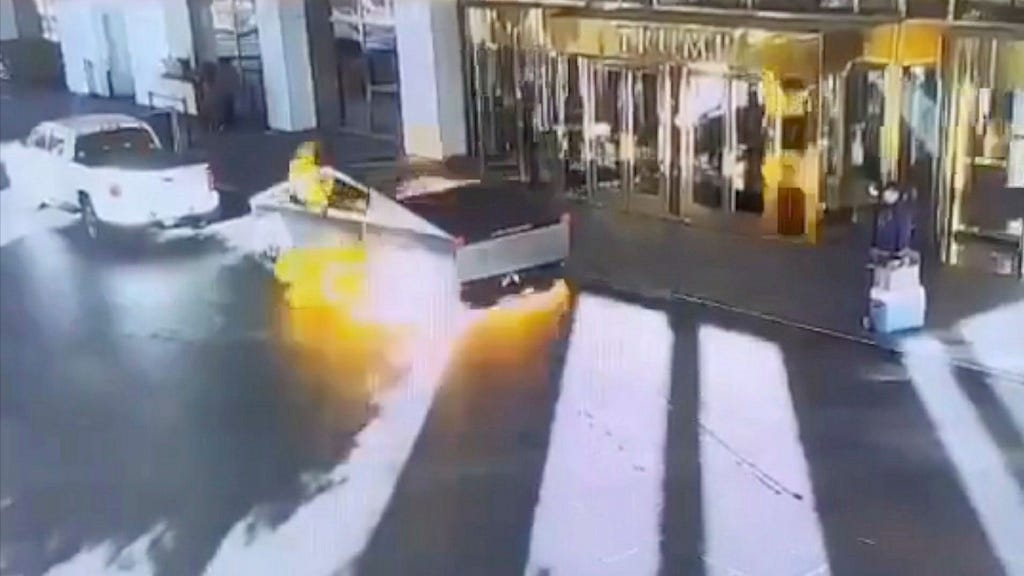On New Year’s Day morning, a rented Tesla Cybertruck parked outside the Trump International Hotel in Las Vegas became the scene of a deadly explosion. The sole occupant of the vehicle, the driver, perished in the blast, while seven others sustained injuries, thankfully reported to be in stable condition. Authorities swiftly confirmed their knowledge of the individual who had rented the vehicle in Colorado before its journey to Las Vegas but withheld the name pending formal identification of the deceased.
The incident sparked immediate investigation, with law enforcement exploring all possible angles. Sources close to the investigation revealed that authorities suspect a combination of fireworks and gas, potentially linked to a driver-controlled detonation system, might have been the cause of the explosion. This revelation raised concerns and fueled speculation, especially given the timing and location of the incident – a high-profile hotel associated with a prominent political figure. The fact that the vehicle was a Tesla Cybertruck, a model associated with another high-profile figure, Elon Musk, further added to the intrigue.
The Las Vegas explosion occurred on the same day as another vehicular incident in New Orleans, where a car plowed into a crowd, resulting in multiple fatalities. The unsettling coincidence of two vehicle-related incidents on New Year’s Day, both involving rented vehicles, prompted authorities to explore potential connections. The New York Times highlighted the ”superficial similarities” between the two events, noting their occurrence on the same day, in public spaces, and involving rented vehicles from the same company. This raised concerns about possible coordinated attacks or copycat incidents.
The FBI’s Las Vegas field office publicly acknowledged its investigation into the possibility of terrorism being linked to the explosion. While President Joe Biden acknowledged that the possibility of a connection between the two events was being investigated, he emphasized that it was too early to draw any conclusions. This cautious approach underscored the complexity of the situation and the need for a thorough investigation before assigning any definitive motives or connections.
The rental company involved in both incidents expressed its deep distress over the events and stated its belief that the renters’ criminal records, if any, would not have flagged them as security threats. This statement emphasized the difficulty in predicting and preventing such incidents, even with background checks and security measures in place. The company’s cooperation with the ongoing investigation becomes crucial in piecing together the circumstances that led to these tragic events.
The Las Vegas incident, involving a highly recognizable vehicle model and a prominent location, immediately drew significant attention. Sheriff Kevin McMahill of the Las Vegas Metropolitan Police Department, while acknowledging the New Orleans attack, emphasized that there appeared to be no immediate threat to the public in Las Vegas. He also stressed that the investigation was still ongoing and many questions remained unanswered, especially given the incident’s connection to both Donald Trump, the former president, and Elon Musk, the CEO of Tesla. The explosion’s proximity to the Trump International Hotel, a building synonymous with the former president, inevitably raised questions about potential motives and targets. The use of a Tesla Cybertruck, a vehicle heavily associated with Musk, added another layer of complexity to the investigation. The evolving relationship between Trump and Musk, which had reportedly strengthened in recent months, also became a point of interest for investigators. The sheriff’s acknowledgement of these factors underlined the unique nature of the incident and the need for a comprehensive and transparent investigation to dispel speculation and address public concerns.














